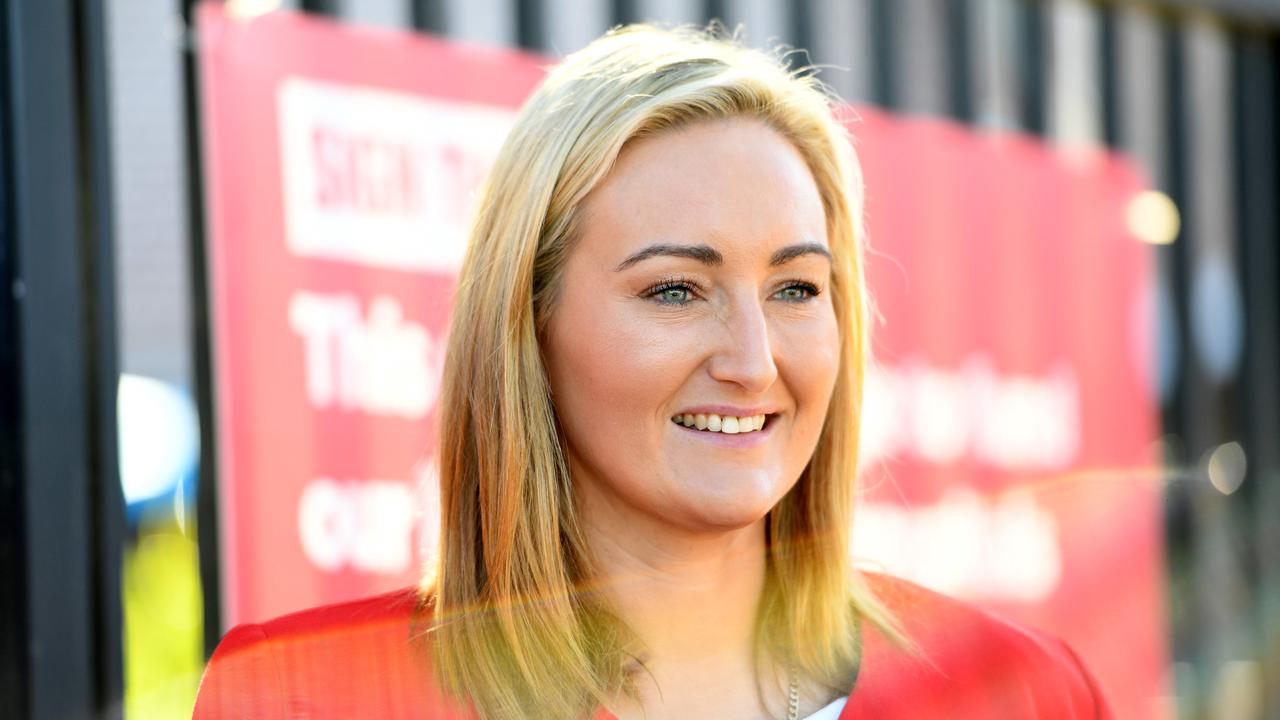ACT grant to Brumbies shifted to developer
A tax concession of up to $7.5m for the benefit of the Brumbies team was instead enjoyed by a property developer.

A tax concession of up to $7.5 million granted by the ACT government for the benefit of the Brumbies rugby union team was instead enjoyed by a private property developer in a deal brokered by a former ACT deputy chief minister.
The circumstances surrounding the 2013 sale of the Brumbies headquarters in the ACT suburb of Griffith and its subsequent relocation to the University of Canberra — both deals struck by the former Brumbies management — have recently caused deep ructions within the club and the Australian Rugby Union.
Brumbies chief executive Michael Jones was sacked, leaving the club last month, after he gave an interview to ABC Radio saying some members of the ARU would be “nervous and uncomfortable” about those two deals, which were being examined by police.
Mr Jones started with the Brumbies in January last year and immediately had concerns over the deals. He subsequently commissioned an in-depth investigative report by forensic investigators KPMG.
It is understood the report uncovered damning details of the two deals and it was referred to the Australian Federal Police last September.
Yesterday the AFP said it was continuing to “evaluate” the contents of the KPMG report but declined to comment further.
Mr Jones, who has a background in finance, said he discovered the problems on his “first day” on the job, calling a board meeting that afternoon.
“You didn’t have to be Einstein to understand the Brumbies should never have entered into these agreements,’’ he told The Australian.
The Brumbies sold their headquarters — comprised of sporting ovals, a parcel of land and a sports club at 18 Austin Street — in 2013 for $11.375m to developer Amalgamated Property Group, owned and run by Canberra developers Graham Potts and Phillip O’Brien.
Mr Potts and Mr O’Brien did not respond to requests for comment yesterday.
Despite the sale occurring in 2013, that sale price had been brokered by the parties in 2009, and so did not reflect much of the considerable property price growth in that time.
The sale price also failed to reflect a $7.5m zoning benefit the ACT government had publicised as being for the benefit of the Brumbies. Instead, the benefit of that taxpayer-funded windfall effectively went to APG.
There appeared to be little explanation as to how the $11.375m sale price had been negotiated, why APG was selected to develop the site or why the project had not gone to tender, despite the Brumbies board recommending a tender process be undertaken.
At the heart of the deal was David Lamont, a Canberra businessman who was an ALP minister between 1992 and 1995.
In that time he held the positions of minister for housing, minister for urban services, minister for industrial relations, minister for sport and ACT deputy chief minister.
Mr Lamont was pivotal in broking the deal between APG and the Brumbies. He was also closely involved in negotiating the $7.5m rezoning benefit from the ACT government.
Mr Lamont could not be contacted yesterday. He has previously said he could not comment because the matter was before the courts.
Mr Jones is currently suing a number of parties, including Lamont, alleging that they acted inappropriately by pushing to have him sacked from the Brumbies.
Andrew Fagan was the chief executive of the Brumbies during the negotiations, having held that position from 2003-2013. Mr Fagan, who is now chief executive of the AFL’s Adelaide Crows, declined to comment when contacted by The Australian yesterday.
A spokeswoman for the University of Canberra said it was not aware of any irregularities involving the relocation of the Brumbies to its campus.
The Brumbies decided to sell their Austin Street headquarters in mid-2008 due to financial difficulties the club was facing.
They obtained a rezoning to increase the value of the land, then sell it to a property developer and relocate to a cheaper location elsewhere in Canberra, using the proceeds to financially support the club.
The move is a well-trodden path, particularly in the nation’s capital. Early in its existence the ACT government gave or sold cheaply parcels of land to many clubs and societies.
With the growth of the nation’s capital, many of those parcels are now in valuable inner-city areas and clubs, many facing financial difficulties, are eager to sell up and move further afield to pump up their balance sheets.
Many of those sites are zoned for recreation or for uses tied to the original club operations, so, as is the case for property development generally, having the zoning of the land parcels changed to allow for apartments, houses or commercial buildings can see the value of the sites skyrocket.
In the ACT, provided the development meets other conditions, developers or land owners can pay a fee to the government to have the zoning changed.
As such, the obtaining of a rezoning — and who pays for it — is a key point for clubs and others selling off.
On August 6, 2009, analyst CBRE prepared formal valuation for the Austin Street site, estimating it to be worth between $18m and $19.5m, provided the rezoning was in place. It estimated the rezoning fee to be between $8.05m and $8.7m.
On October 12, 2009, the Brumbies entered a “put and call” sale agreement to sell the Austin Street Property to APG for $11.375m. The contract specified APG would pay the rezoning fee and the sale agreement was to expire in three years, on October 12, 2012. In June 2012, Knight Frank valued the property at between $14.5m and $15.5m, provided the rezoning was in place and paid for.
Three months later, the ACT government said it would waive the rezoning fee on the site — up to the cost of $10m — to benefit the Brumbies. The ACT government was eager to get political mileage out of the deal — effectively funded by the taxpayer in lost government revenue — and publicly announced its generosity to the city’s rugby union team.
The following year, in April, the ACT government approved the rezoning and redevelopment of the site, and it came good on its offer, waiving the $7.5m rezoning fee calculated to be payable.
However, despite having received a valuation of between $13.4m and $16.6m a year earlier, the market having risen, they sold the site to APG for the then four-year-old figure of $11.375m on June 14, 2013.
The original October 2009 agreement between the Brumbies and APG was due to expire in October 2012, however, it was extended on three occasions, until after the ultimate sale date.
On May 30, 2013 — after the development had been approved and the ACT government had agreed to waive the $7.5m rezoning fee to the benefit of the Brumbies — the agreement was extended for a third time, to July 12, 2013. That meant that the October 2009 sale price remained in effect at the time of the sale.
Mr Jones said he was aware no reference to the second and third extensions of that 2009 agreement could be found in Brumbies board minutes and that at least one board member had said they were unaware of the third extension.
He said he was aware that, unlike the first variation, the second and third variations extending the time of the agreement to sell at $11.375m did not appear as though they had been prepared professionally and that the third variation had been handwritten.
Do you know more? klana@theaustralian.com.au



To join the conversation, please log in. Don't have an account? Register
Join the conversation, you are commenting as Logout